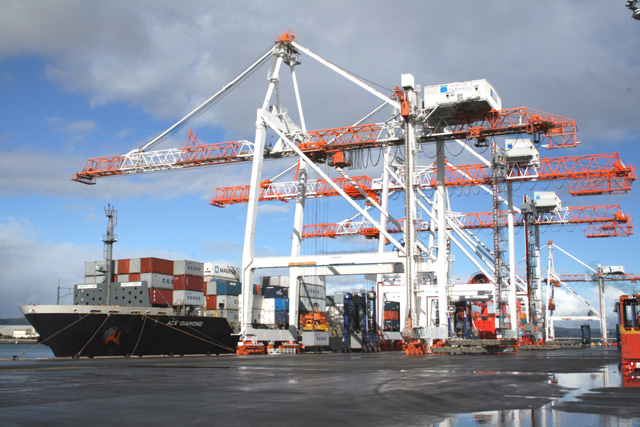 New regulations mean containers will have to be weighed before they are loaded onto ships.
PHOTO: Port of Tauranga |
Recent proposed changes to the SOLAS (Safety of Lives at Sea) convention regarding the verification of container weights have been the subject of much discussion.
The new regulations mean containers will have to be weighed at the terminal before they are loaded onto ships. Terminals will be asked to verify the weights entered on shipping papers when loading containers.
Container spreader manufacturer Bromma, which manufactures over 2,000 spreaders annually, is staying involved and engaged in the general debate and discussions. It is also following the new regulations to ensure its products will meet the requirements in the new regulations.
Lars Meurling, vice president of marketing for Swedish manufacturer, calls the regulation a necessity that deals with the issue of misdeclared container weights.
"There are regulations already today that require the shippers to declare correct weights. Despite this, there is a significant share of containers loaded on vessels, that is, for one reason or the other, misdeclared. This clearly indicates the need for a stronger regulation and the need for additional measures.
"The new regulation still allows for the total weight of the container to be calculated using certified weights of the sub-packages, but we believe weighing the actual container in the port of vessel loading will, for the shipping line, provide a more reliable weight verification method."
Bromma offers a technical solution to weighing containers. With sensors mounted in the spreader twistlocks, containers can be weighed without affecting the workflow in the terminal. The container is weighed as part of the regular lift cycle.
Meurling says while a weighbridge is the typical way of weighing a container, it has significant disadvantages compared to the twistlock-based technology.
"The weighbridge would weigh a complete truck including the container. The tare weight of the truck has to be deducted in order to get the container weight. This will introduce either additional steps as the empty truck needs to be weighed - or it will introduce inaccuracy in the measure when a standard tare weight of the vehicle is used."
He adds that another advantage of twistlock-based technology is that this system can measure the weight of individual 20-foot containers when lifted in twin mode. "This is not possible ... in a weighbridge without introducing additional weighing steps, for example, the off-loading of one of the containers."
Patrik Lundbäck, Konecranes general sales and marketing director, says his forklift division colleagues feel there is "room for improvement in many ports".
"When the customer is loading their containers, they of course try to load as much as possible, and many times they might not even know the weight of the load they have loaded into the containers.
"In order to weigh all containers, we have our machines equipped with electronic weight indicators.
"Another problem terminals are facing is off-balance loaded containers, where we can offer 'auto levelling', which means the machine will automatically level off-balance loaded containers."